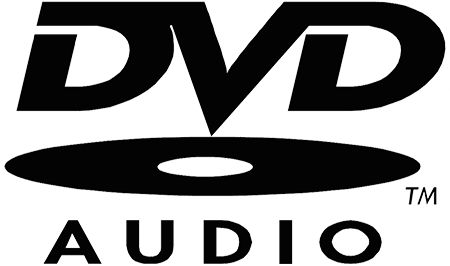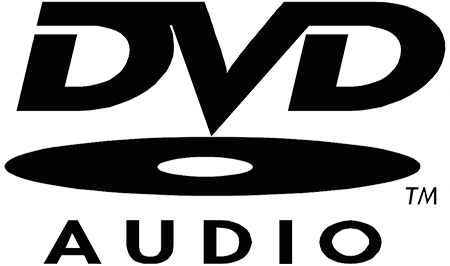When you look at the excitement that Dolby Digital and dts 5.1-channel soundtracks from DVDs can generate played over a good home theater system, it's not surprising that Sony/Philips and the DVD developers (Toshiba) decided that an upgraded multichannel audio format was overdue. After all, the CD is stereo, limited to two channels. And despite Sony's original claim, in 1983, of CD's "Perfect Sound Forever," complaints have surfaced over the years about certain limitations in the CD's technical standards.
For example, some audiophiles grumbled about the 44.1-kHz CD sampling frequency, which limits its high-frequency response to 22 kHz (the assumption being that we humans can hear beyond 22 kHz, a dubious claim at best and not supported by any scientific data). Others complained that the CD's 16-bit digital "words" (which yield 6 dB of dynamic range for each bit, for a total of 96 dB), don't capture the dynamic range of human hearing, which can extend to 130 dB or higher.

Consumer electronics is nothing if not a history of overcoming technical challenges, so the digital engineers got busy and emerged from their respective camps with two new multichannel formats: DVD-Audio and Super Audio CD (SACD), each of which boasts technical standards beyond reproach. DVD-Audio lets recording producers choose any of several sampling rates and word sizes: 44.1, 48, 88.2, 96, 176.4 or 192 kHz, coupled with 16-, 20- or 24-bit words. By using Meridian Lossless Packing (MLP), a "lossless" compression algorithm that does not discard data (it's like zipping a PC file or stuffing a Mac file), all DVD-A's can deliver six full-bandwidth audio channels sampled at 96 kHz with 24-bit words. Do the math and you'll find that yields an upper frequency limit of 48 kHz (high enough for your family dog or cat or a bat), and a dynamic range of 144 dB (24 x 6 dB = 144 dB).
But (and this is a big "but"), can you play it on your CD player? Nope, you cannot. It will only play on a new DVD player that has a DVD-Audio decoder. And because there are currently 500 million CD players worldwide, that may be a huge impediment to the success of DVD-Audio. However, the good news is that virtually all DVD-Audio discs carry a duplicate Dolby Digital 5.1-channel mix, which means that DVD-A's will play on any DVD player. This will let you sample multichannel music through your existing DVD player and Dolby Digital/dts A/V receiver, but only in Dolby Digital. You won't benefit from the "lossless" 96-kHz sampling rates and 24-bit word lengths that DVD-Audio delivers. To get those benefits, you'd need a "Universal" DVD player that will play regular DVDs as well as DVD-Audio discs and SACD discs.
What about Sony's Super Audio CD (SACD)? Launched by Sony and Philips in 1999, SACD uses Direct Stream Digital (DSD), a 1-bit system with a sampling rate of 2.8 million times a second, about 64 times the sampling rate of conventional CDs. This 2.8-MHz rate yields a frequency response of 1 Hz to 100 kHz, far beyond the response limits of human hearing, and a 120-dB dynamic range that is roughly equivalent to our ears' dynamic range. SACD is now capable of delivering six full-bandwidth DSD channels that encompass those extraordinary standards.
But can you play SACD on a CD player? Yes--and no. An SACD isn't playable on a standard CD player unless it's a hybrid two-layer disc with a CD-compatible second layer. And then you'll only hear it in stereo with CD standards. Oddly, most of Sony Music's own SACD releases are not hybrid discs, and will play only in an SACD machine. But some other labels are now releasing hybrid SACDs, and many of those do take advantage of SACD's multichannel capabilities.
As to how the two formats sound, both are superb. Based on my listening tests, neither format has "better" sound than the other. Do they sound better than CD sound or Dolby Digital 5.1? So far, in my judgment the differences are a matter of nuances. It's not dramatic. Of course, when the musical multichannel mix of an album is done with restraint and invention, the multiple channels can be a huge enhancement, as anyone experienced with Dolby Digital 5.1 can attest. I've left the philosophical/musical controversy of whether listeners want to feel in the middle of a band, with instruments mixed to the sides and rear, or prefer the perspective of the band and performers in front, for another time.
So far, after a number of years on the market, neither SACD or DVD-Audio has been a commercial success. At best, they are "niche" formats, with a limited selection of artists and discs. They are also difficult to find in many retail record stores but you can find them on-line. If you want to sample both audio formats, Pioneer and Samsung have budget Universal models ($175) and Denon has expensive ones ($600) that play both formats as well as conventional DVDs.
If you'd like a taste of one of the new multichannel audio discs, try the SACD "New Favorite," from Alison Kraus & Union Station (Rounder), which mixes the dobro guitar in front and rear channels with Kraus's vocals in all three front channels. A definite DVD-Audio winner is Buena Vista Social Club (World Circuit/Nonesuch), which has an expansive mix with the musicians surrounding the listener. And to get an idea of what an older album remixed for a new format (in this case, DVD-A), check out Neil Young's "Harvest," which also places the musicians around the listener, with reflections from surrounding hills included as ambience on the electric cuts, which were originally recorded in a barn.





